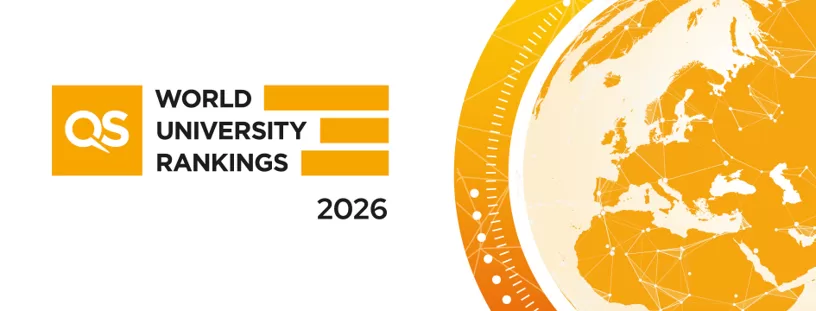
The QS World University Rankings, the most comprehensive of its kind, shines a light on the best institutions from across the world, supporting our mission of enabling motivated people anywhere in the world to fulfil their potential through educational achievement, international mobility, and career development. The very first edition was released in October 2004 and for over 20 years we have provided comparative insights to students and institutions across the globe.
This article will cover some of the most common questions institutions ask around entering the QS World University Rankings, including the benefits of the rankings, the requirements they need to meet, and where to start. We will explore how the QS World University Rankings work and how your institution can take its first strategic steps towards entering the rankings.
What does the QS World University Rankings measure?
In the QS World University Rankings, an institution’s performance is determined by nine key indicators.
- Academic Reputation
- Employer Reputation
- Faculty Student Ratio
- Citations per Faculty
- International Faculty Ratio
- International Student Ratio
- International Research Network
- Employment Outcomes
- Sustainability
These indicators slightly differ from the regional rankings we compile.
The QS World University Rankings draw on data from a range of different sources, including two global surveys: QS Global Academic Survey and the QS Global Employer Survey.
What are the different rankings out there and what does this mean for me?
Alongside the QS World University Rankings, we also produce rankings covering areas such as geographic regions, subjects, sustainability, and business master’s and MBAs.
- Our regional rankings highlight the best performing institutions in the Arab Region, Asia, Europe, and Latin America and the Caribbean, each with its own bespoke methodology.
- We also produce the QS World University Rankings by Subject, where we measure institutional performance across 55 different subjects.
- For business schools, we have rankings dedicated to showcasing excellence in MBAs, International Trade, Online MBAs, and Executive MBAs.
- With location being a key driver of student decision-making, we also have the QS Best Student Cities ranking, which considers a city’s affordability, desirability and student opinion.
- Finally, in the QS World University Rankings: Sustainability, we measure an institution based on their commitment to sustainability through research, alumni impact and ESG work.
The variety of different rankings produced by QS means that universities who stand out in specific subjects or regions have a chance to be featured.
What are the benefits of being included in the rankings?
Given that the QS World University Rankings is the most widely read university rankings in the world, any included institution is likely to stand out to prospective students.
Incorporating the news of your rankings position into your marketing strategy can also have a positive effect on your international student recruitment. 43% of students said information about performance in rankings was useful when making study decisions (QS International Student Survey 2024).
If you are included in the QS World University Rankings, you will receive your result, a fact file with insights and a digital badge you can use to celebrate your success. This will be sent under embargo.
Being evaluated for the rankings, no matter where you’re positioned, provides detailed insights into how you’re performing as an institution in key areas and a clear understanding of how this compares to other institutions.
This provides you with an idea of your institution’s national, regional, and global standing, and helps you establish possible areas for improvement.
What are the requirements to enter the rankings?
There are around 27,000 universities in the world, and only the best performing universities are included in the QS World University Rankings.
In order to be eligible, a university must provide full degree programmes at both undergraduate and postgraduate level.
It must provide those programmes (either undergraduate or postgraduate) in at least two of the following faculty areas:
- Arts and Humanities
- Engineering and Technology
- Life Sciences and Medicine
- Natural Sciences
- Life Sciences and Medicine
- Social Sciences and Management
In each faculty area the university must offer programmes in at least two subjects. The university must have also had at least three graduated classes in each subject.
If your university meets these key requirements and would like to be considered in the QS World University Rankings, you should get in touch with a QS ranking representative.
To ensure you maintain contact with this representative, it’s best to assign a key contact from your institution who can keep on top of all communications. This representative may then direct you towards the QS Rankings Entry Diagnostic, which is a data-rich tool that allows institutions to gain insight into how they’re currently performing in each of the six key areas.
From this, universities can get a better understanding of what they might need to improve upon, and how far they are from hitting the minimum performance required for rankings inclusion.
Why hasn’t my institution appeared in the rankings before?
If you’re unsure why your institution hasn’t appeared in the rankings before, it may be that it isn’t eligible for inclusion.
This could be due to a variety of reasons, including being too specialised, only teaching at one level, or not producing enough highly cited research.
Each of our rankings has its own inclusion criteria and this defines whether an eligible institution is included in the rankings.
Many of the universities that are not ranked in the QS World University Rankings are included in the regional rankings and/or the subject rankings. This can often be the first step towards being included in the QS World University Rankings.
How are the rankings calculated?
The QS World University Rankings are calculated using data collected on nine key performance indicators. Each ranking project has its own unique set of indicators and weightings.
For the QS World University Rankings 2025, the indicators and weightings are:
- Academic Reputation – 30%
- Citations per Faculty – 20%
- Employer Reputation – 15%
- Faculty Student Ratio – 10%
- International Faculty Ratio – 5%
- International Student Ratio – 5%
- International Research Network – 5%
- Employment Outcomes – 5%
- Sustainability – 5%
Once the data has been collected and the weightings are considered, standard scores for each column of data are calculated.
This process is called normalisation, and it allows the data to be compared fairly.
Where does QS get its rankings data from?
To calculate the score for the Academic and Employer Reputation indicators, we use data from the QS Global Academic Survey and the QS Global Employer Survey.
Between 2020 and 2024 QS received over 175,500 academic responses and over 100,700 employer responses, making both surveys the largest of their kind in the world.
QS also uses the Scopus/Elsevier bibliometric database to analyze papers for the Citations per Faculty metric; each year around 3 million research papers are analysed.
Each institution can also provide QS with the relevant information and data necessary to process the evaluation.
We also use publicly available data when an institution has not submitted their own.
What standards would I have to meet for research output and impact?
To compare the research standards of different institutions as part of the QS World University Rankings, QS uses the Citations per Faculty indicator. This is calculated by taking the total number of citations received by all papers produced by an institution across a five-year period and dividing this by the number of faculty members at that institution. Later years have a smaller weighting to ensure the indicator is assessing current performance.
To account for the fact that different fields have very different publishing cultures, such as Life Sciences papers which are often responsible for a large proportion of all research citations, the results are normalised.
This means that a citation received for a paper in Philosophy is measured differently to one received for a paper on Anatomy and Physiology, ensuring that, when evaluating an institution’s true research impact, both citations are given equal weight.
This metric is used because the more often a piece of research is cited by others, the more influential it is, offering a good indication of the success and reach of a university’s work.
QS uses Elsevier’s Scopus database. To be considered for the QS World University Ranking you’ll need to make sure that your institution is appropriately set up in Scopus.
What are the main areas I should focus on to dramatically improve my chances of entering the rankings?
While QS rankings analysts can’t provide you with specific actions you can take, the QS Rankings Entry Diagnostic can identify your unique areas for improvement and help your institution to set strategic actions.
It’s important to take a holistic, long-term view when aiming to improve each key indicator; making sure your institution does not become complacent by relying on its strengths but instead works consistently on areas of weakness.
One of the most important actions you can take as part of the rankings process is to develop strong communication channels with QS.
QS will struggle to successfully process your rankings without regular contact with a university representative regarding deadlines and data submission requirements.
If your point of contact changes, it’s important to let QS know so you don’t miss out on any relevant information or instructions.
Please adhere to any established deadlines as they have been set to ensure there’s enough time to evaluate and verify the data before the rankings are published.
Conclusion
In being evaluated for the QS World University Rankings, the strengths and weaknesses of your institution can be identified; ultimately helping you to evolve into a world class provider of higher education. Entering the rankings will award you with a status to be proud of, and one that can be utilised to attract promising talent to your institution.
As such, it should be treated as a strategic investment, one which requires long-term planning, resources, and funding. To ensure your institution takes a strategic approach to rankings, it must prioritise and invest in the examination and analysis of the data that shapes it.
To find out more about the QS Rankings Entry Diagnostic and how it can transform your institution, get in touch with our expert team today.
43% of students said ranking performance was among the top five most useful sources of information when researching a university.
When asked how they assess a university’s teaching quality, 64% of students said it was important that the university is ranked well overall in independent ratings.
(QS International Student Survey 2024)



